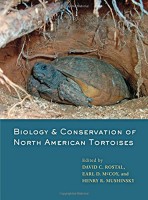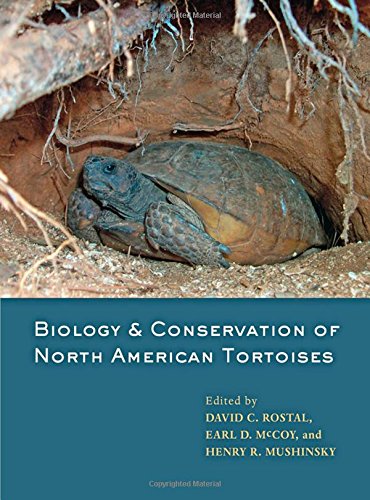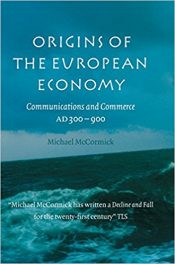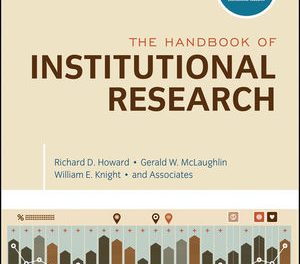 Editors: David C. Roistal, Earl D. McCoy, and Henry R. Mushinsky
Editors: David C. Roistal, Earl D. McCoy, and Henry R. Mushinsky
Publisher: Johns Hopkins University Press – 190 pages
Book Review by: Paiso Jamakar
Tortoises, once part of the turtle family, are known to live a very, very, long time – up to 200 years. Their longevity makes them standout in the animal kingdom. They split off from the pond turtles about a hundred million years ago, the editors point out.
Their other unique characteristic is that they can grow to an enormous size and weight. The heaviest known living tortoises are the Galapagos tortoises that weigh up to 550 lbs (250 kgs) and are about five feet long. The Galapagos is an archipelago about 1,000 kilometers west of Ecuador. In the 16th century, there were about
Other large tortoises live on the Aldabra archipelago in the Indian Ocean, about 700 kilometers east of Tanzania, where they grow up to 330 lbs in weight and 3.5 feet in length. History shows that there were many giant tortoises that lived in the islands of the western Indian Ocean but due to over-exploitation, became extinct around the year 1840. The only ones that have survived till today are the Aldabra tortoises.
Tortoises numbered as many as 250,000 in the 16th century. Today their population has dwindled to around 3,000 to 5,000 only. Major causes of this decline are: exploitation of the species for meat and oil; clearance of habitats for agriculture; introduction to their environment of non-native animals to the islands, such as rats, goats, and pigs that ate tortoise eggs; and predation by humans.
This book deals with many aspects of tortoises, making it one of the most comprehensive on the subject. Representing the work of 33 experts who contributed material to this excellent, unique reference source, you will find information and insight on tortoises in terms of their behavior, conservation, diet, ecology, embryology, energetics, evolution, growth, health, morphology, paleontology, physiology, reproduction, systematics, and taxonomy.
Here is an overview of what you will find in this book as gleaned from its Contents page:
- Morphology, Taxonomy, and Distribution of North American Tortoises: An Evolutionary Perspective
- The Fossil Record for North American Tortoises
- Systematics for Extant North American Tortoises
- Thermoregulation and Energetics of North American Tortoises
- Reproductive Physiology of North American Tortoises
- Embryonic Development, Hatching Success, and Temperature-Dependent Sex Determination in North American Tortoises
- Growth Patterns of North American Tortoises
- Health Issues of North American Tortoises
- Habitat Characteristics of North American Tortoises
- Water and Food Acquisition and Their Consequences for Life History and Metabolism of North American Tortoises
- Home Range and Movements of North American Tortoises
- Social Behaviors of North American Tortoises
- Nesting and Reproductive Output among North American Tortoises
- Abundance of North American Tortoises
- Population and Conservation Genetics of North American Tortoises
- Demography of North American Tortoises
- History of Human Interaction with North American Tortoises
- Threats and Conservation Needs for North American Tortoises
This is an excellent book for students of turtles, who are known in biological circles as cheloniologists.
Editors:
David C. Rostal is a professor in the Department of Biology at Georgia Southern University.
Earl D. McCoy is the associate chairman of the Department of Integrative Biology at the University of South Florida.
Henry R. Mushinsky is a Kosove Graduate Professor and graduate director for the Department of Integrative Biology at the University of South Florida.







